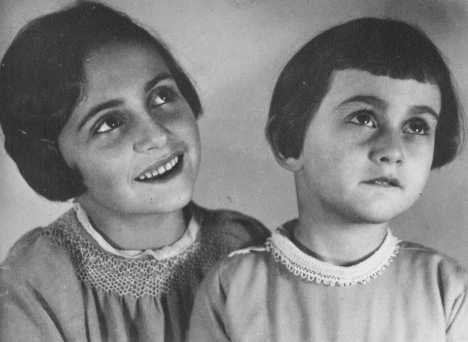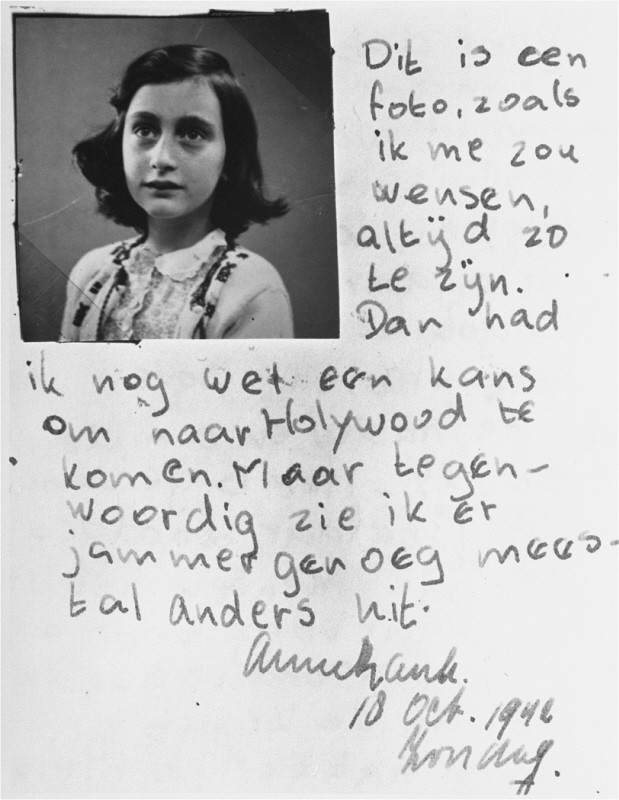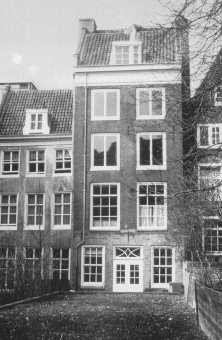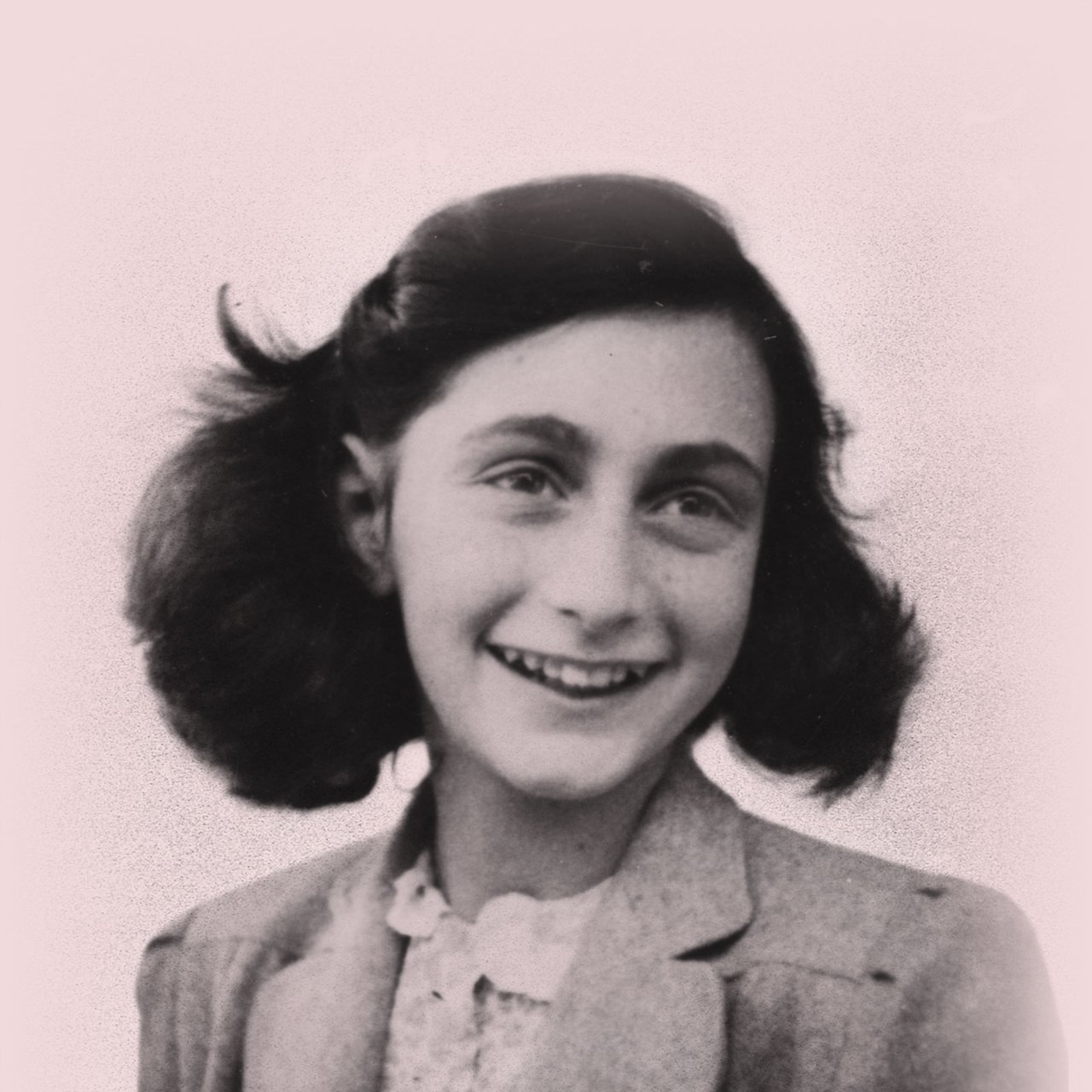Anne Frank was a Jewish girl from Germany who became famous for maintaining a journal of her experiences during the Holocaust. To evade Nazi persecution, Anne and her family went into hiding for two years. The Diary of a Young Girl, a collection of her writings from the time, is now available.
Early Years of Anne Frank
Annelies Marie Frank was born in Frankfurt am Main, Germany, on June 12, 1929. Otto and Edith Frank were her parents.Anne spent her first five years of life in an apartment on the outskirts of Frankfurt with her parents and older sister, Margot. Otto Frank escaped to Amsterdam in the Netherlands, where he had business connections, after the Nazis came to power in 1933. The remainder of the Frank family arrived soon after, with Anne arriving last in February 1934 after residing with her grandparents in Aachen.

Margot and Anne Frank. (Margot and Anne Frank before their family fled to the Netherlands. Bad Aachen, Germany, October 1933.)
What Happened to the Jews in Amsterdam?
With the German conquest of Amsterdam, which began in May 1940, the destiny of the Frank family and other Jews in the city was sealed. The Germans began preparing to transport Jews from the Netherlands to death camps in the east in early 1942. They required that all Dutch Jews be concentrated in Amsterdam at the time.
They also agreed to send all non-Dutch Jews to the Westerbork transit camp for internment. German officials transferred Jews from Westerbork to the Auschwitz-Birkenau and Sobibor concentration camps in German-occupied Poland. On July 15, 1942, the first deportation transport left Westerbork for Auschwitz-Birkenau. Many Jews in the Netherlands, notably the Franks, were worried by these deportations and the rising anti-Jewish policies.
Anne Frank: Deportation and Amsterdam
Otto Frank (Anne Frank’s father) fled Frankfurt, Germany, for Amsterdam, the Dutch capital, after the Nazis took control in January 1933. Soon after, the rest of the Frank family joined them. In February 1934, Anne was the final member of the family to arrive in Amsterdam. German authorities began deporting Jews from all over the Netherlands to concentration camps and death centers in the east in July 1942.
The Frank family went into hiding in the same month. For the following two years, they remained in hiding. In 1944, the Frank family was apprehended by the German SS and police and sent to Auschwitz-Birkenau. Anne and her sister Margot were deported to the Bergen-Belsen detention camp later that year. In February or March 1945, Anne and Margot died in Bergen-Belsen.
Deportation and Arrest
Anne and her family went into hiding in the first half of July 1942. Hermann, Auguste, and Peter van Pels, as well as Fritz Pfeffer, were later added to the group. They resided in a secret flat at 263 Prinsengracht Street for two years. Otto Frank had worked as a company director and the apartment was located behind his office. In her diary, Anne referred to the secret hideaway as the Secret Annex. Johannes Kleiman, Victor Kugler, Johan Voskuijl, Bep Voskuijl, Jan Gies, and Miep Gies, Otto Frank’s friends and colleagues, had helped to prepare the hiding location and smuggled food and clothing to the Franks at great risk to their own lives.Anne kept a diary while in hiding, recording her concerns, hopes, and experiences.
The hiding spot was discovered on August 4, 1944, by the German SS and police. It has long been assumed that the police took action after receiving a tip from an anonymous Dutch caller. However, according to a more recent interpretation, the Germans discovered the hiding location by chance when investigating claims of illegal activity and ration ticket fraud at the property.

October 10, 1942, excerpt from Anne Frank’s diary
(Excerpt from Anne Frank’s diary for the date October 10, 1942: “This is a photograph of me as I wish I looked all the time. Then I might still have a chance of getting to Hollywood. But now I am afraid I usually look quite different.” Amsterdam, the Netherlands.)
The Franks were apprehended that day by an SS Sergeant (Hauptscharführer) called Karl Silberbauer and two Dutch police officers. On August 8, the Gestapo View This Term in the Glossary deported the family to Westerbork, a transit camp in the Netherlands. The Franks and the four others hiding with them were placed on a train transfer to Auschwitz-Birkenau in German-occupied Poland a month later, on September 3, 1944. The last transit from Westerbork to Auschwitz took place on this day.
With 1,019 Jews on board, the shipment landed in Auschwitz two days later. Separation of men and women was enforced. The occupants of the Secret Annex were all chosen for forced labor.
The ladies picked for this shipment, including Anne, Edith, and Margot, were tattooed with prisoner numbers, just like other Jews designated for work. Records containing their exact numbers have been lost. Anne Frank’s death certificate does not include her tattoo ID number, despite the fact that it tracks her travel between camps.
In early November 1944, Anne and her sister Margot were moved to the Bergen-Belsen detention camp in northern Germany.
What Happened to the Franks: How Did Anne Frank Die?
Anne Frank died in February or March 1945, just before the liberation of Bergen-Belsen by British soldiers on April 15, 1945. Anne Frank died when she was 15 years old. Margot Frank died in February or March 1945, at the age of 19. Anne and Margot both perished of typhus.
Anne’s parents were likewise chosen for labor by the SS. Edith, Anne’s mother, died in Auschwitz in January 1945.

House where Anne Frank and her family hid. (This house at Prinsengracht 263, where Anne Frank and her family were hidden. Amsterdam, the Netherlands. After 1935)
Otto, Anne’s father, was the only one who survived the war. On January 27, 1945, he was rescued from Auschwitz by Soviet soldiers. Anne’s notes were retained by Miep Gies, one of the Dutch people who had concealed the Franks, and were handed to Otto later.
Otto Frank was instrumental in the publication of his daughter’s diaries. Many people’s first, and sometimes only, exposure to Holocaust history is through Anne Frank’s diary. Short stories, fairy tales, and essays were among Anne Frank’s works.The house in Amsterdam where the Franks hid continues to draw a huge crowd. In 2017, more than 1.2 million people visited the Anne Frank House, which is today known as the Anne Frank House.
Anne Frank Quotes
- “How wonderful it is that nobody need wait a single moment before starting to improve the world.”
- “I know what I want, I have a goal, an opinion, I have a religion and love. Let me be myself and then I am satisfied. I know that I’m a woman, a woman with inward strength and plenty of courage.”
- “Everyone has inside of him a piece of good news. The good news is that you don’t know how great you can be! How much you can love! What you can accomplish! And what your potential is!”
- “What is done cannot be undone, but one can prevent it happening again.”
- “I don’t think of all the misery but of the beauty that still remains.”
Facts
| Also Known As | Annelies Marie Frank |
|---|---|
| Born | June 12, 1929 • Frankfurt am Main • Germany |
| Died | February 1945 or March 1945 (aged 15) • Bergen-Belsen • near Hannover • Germany |
| Notable Works | “The Diary of a Young Girl” |
| Notable Family Members | father Otto Frank |






